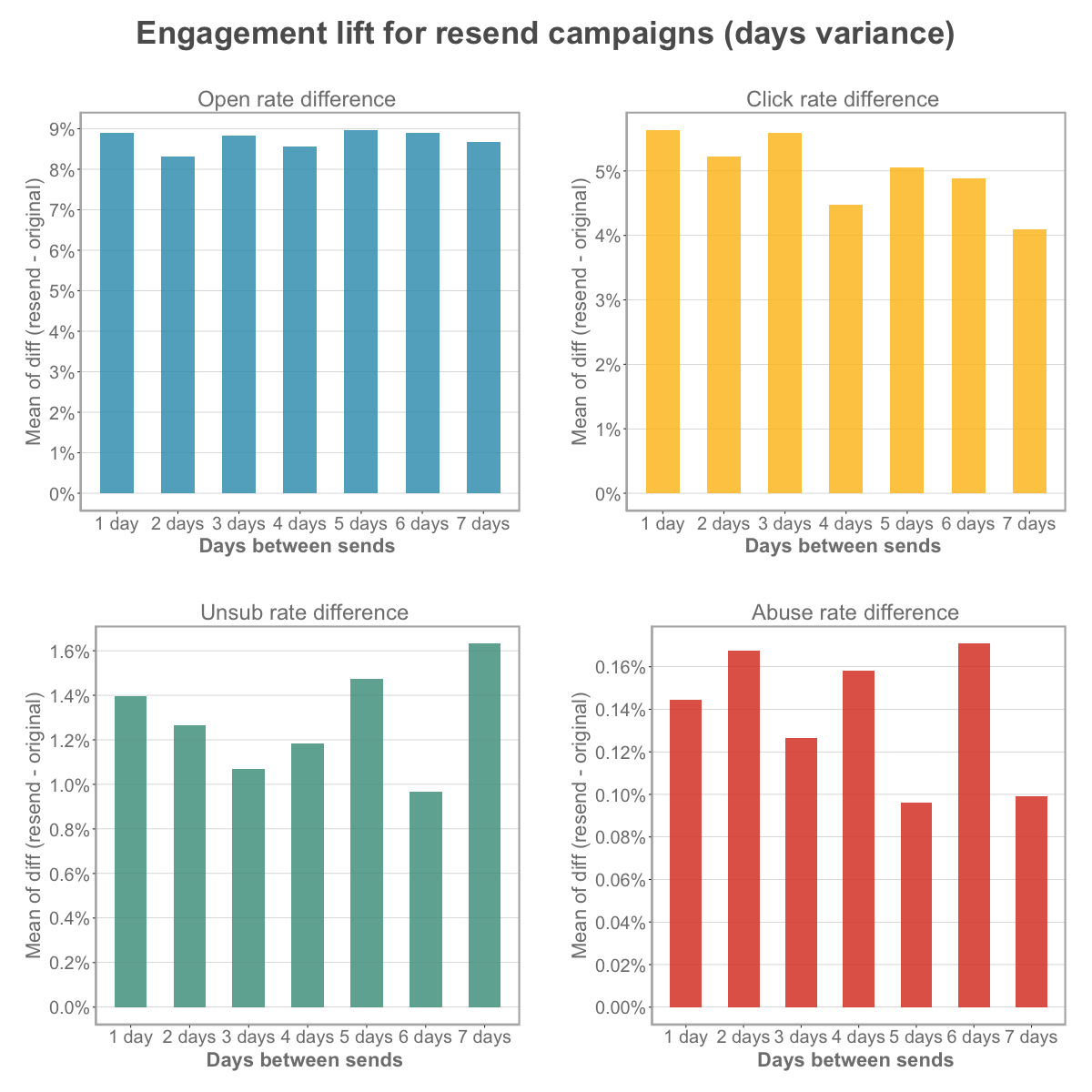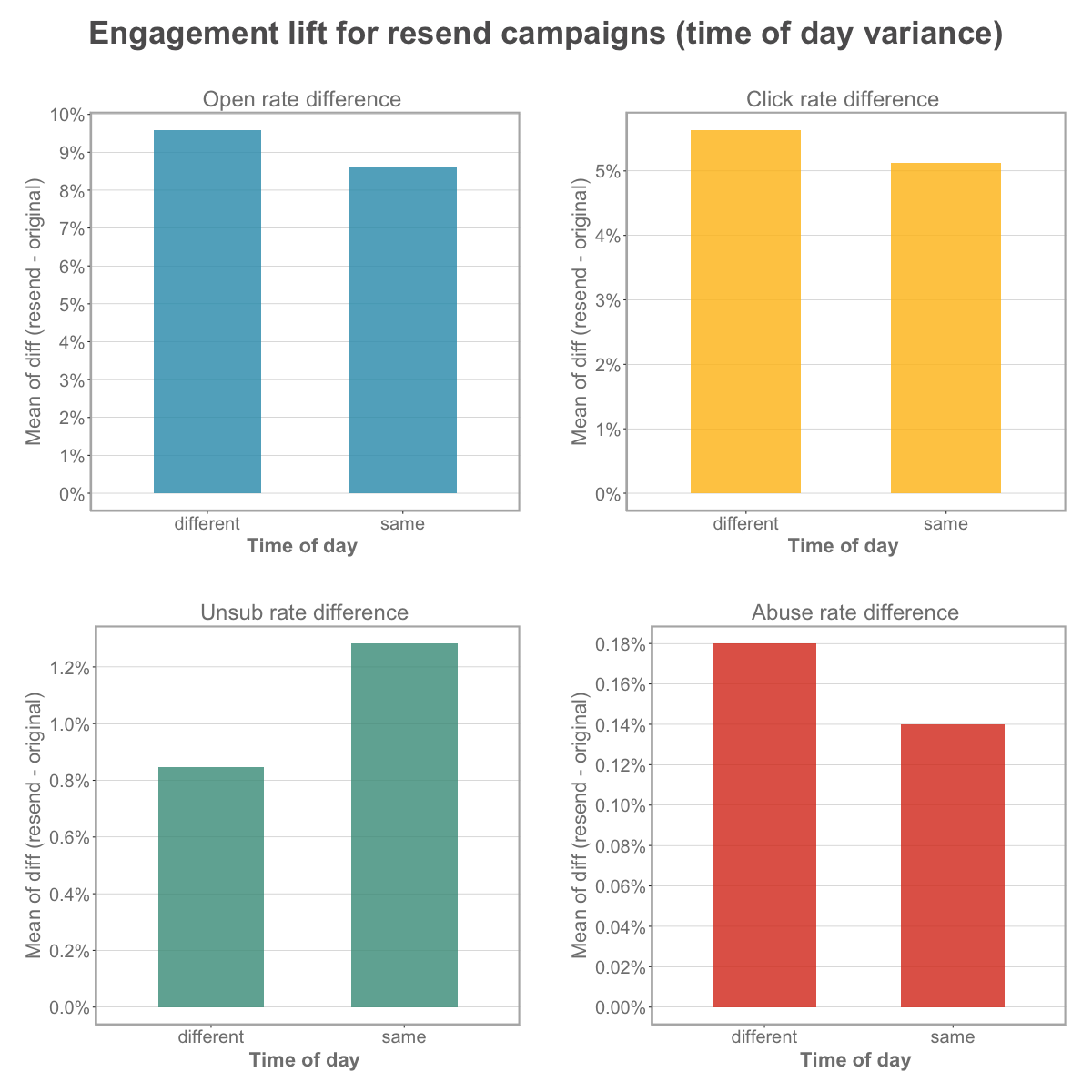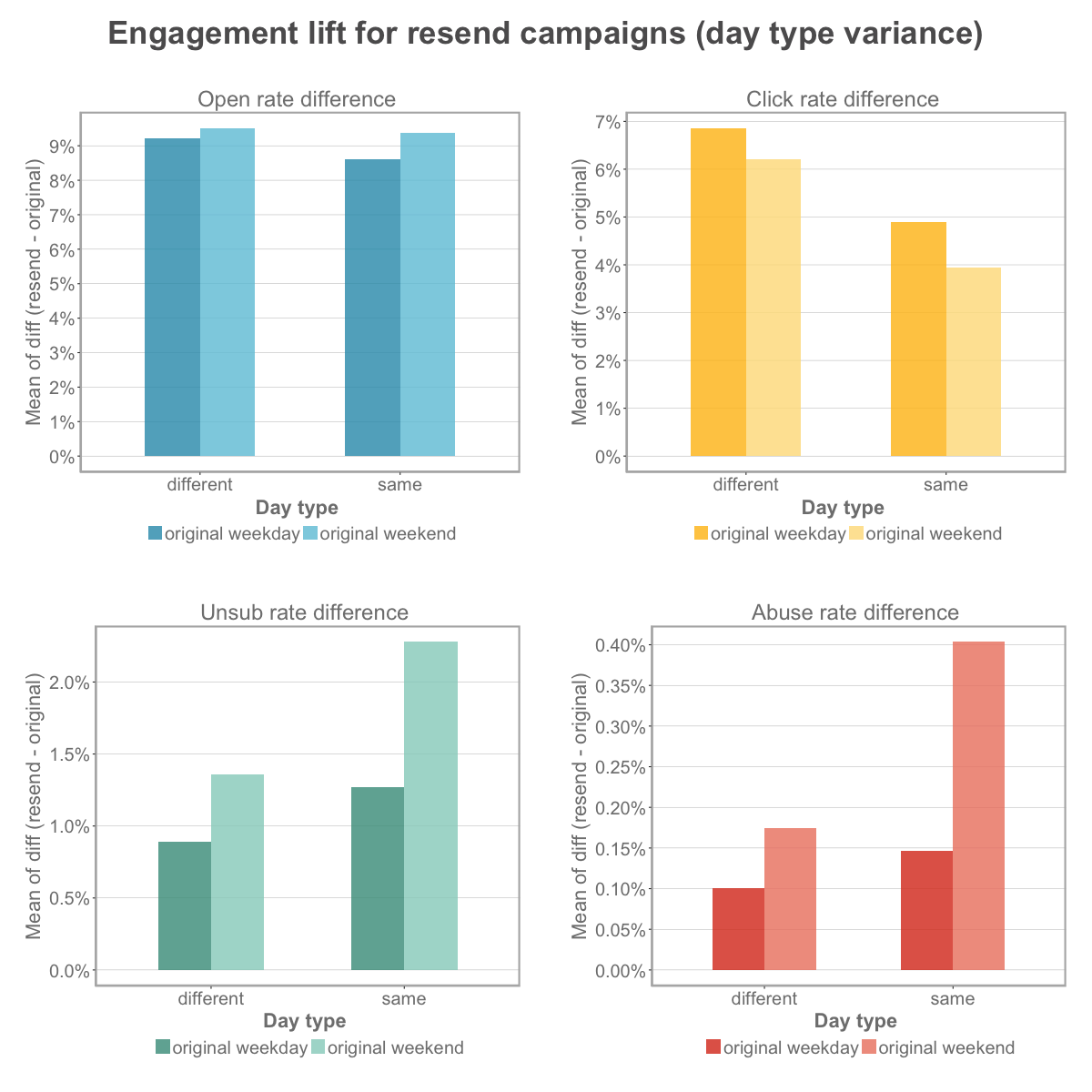This is the second of a 2-part series on resending campaigns. If you missed part 1, you can check out our data on open rates, subject lines, and From name.
The last time we looked at resend campaigns, we saw that simply resending a campaign to subscribers who didn’t open the first time is a great idea. You can increase the percent of your list who opened by 8.7 percentage points. That’s enough to turn a good open rate into a great open rate, but there are definitely factors that can make some resends more successful than others.
We analyzed 1,300 campaigns and their corresponding resend campaigns to see if we could find what factors make resend campaigns successful. The first question I want to answer today is: How long should you wait to resend a campaign?
Note: These charts don’t show the engagement rates of the resend campaign. Instead, they show additional metrics from the resend campaign as if they were added to the engagement metrics from the original campaign. We liked this measurement because it demonstrates the real impact of the resend campaign on what matters: the number of subscribers who interact with your email.
Days between original and resend?
Verdict: 1 to 3 days

Looking at just opens, it doesn’t seem like there is a huge different between waiting 1 day or 7 days between sending your original campaign and the resend campaign. However, we do see a decline in clicks for resend campaigns that are sent more than 3 days after the original.
On the other hand, the data for unsubscribes and abuse complaints looks erratic after the 3-day period. While there doesn’t appear to be a slam dunk answer, I would argue that the decrease in interest and the unpredictable list attrition metrics suggest that resend campaigns should be sent within a 3-day window of the original campaign.
Change the time of day?
Verdict: It’s good, but it’s not for everyone.

We wanted to know if you could get new subscribers to open by sending at a different time of day. To do this, we identified resend campaigns that were sent more than 8 hours before or after the time of day that the original campaign was sent. For instance, this would include resend campaigns that were sent in the afternoon while the original campaign was sent in the early morning.
The results were deeply conflicting. We see slight increases in the gains for opens and clicks when users change the time of day for their resend campaign. We also see a drastic decrease in unsubscribes for users who send their resend campaign at a different time of day. However, we also see a lot more abuse complaints.
As mentioned in the last blog post, abuse complaints can impact your deliverability in short order. If you have to choose between unsubscribes and abuse complaints, you should always choose to minimize abuse complaints because they will damage your reputation with ISPs and hurt your chances of getting to the inbox.
That being said, if you have unusually low abuse complaints to start with, you may want to experiment with the time of day for your resend campaign. For our paid users, I would highly recommend checking out our Send Time Optimization feature instead.
Resend on a weekend or a weekday?
Verdict: Mix it up!

The data here is totally a slam dunk, but these charts require some mental gymnastics because they show 4 different groups per chart.
We wanted to look at users who sent their original campaign on a weekday and their resend on a weekend and vice versa. We don’t see a huge difference in open rates, but click rates were much better for people who changed things up. The data suggests that if you send your original campaign on a weekday, you’ll see far more clicks if you resend your campaign on a weekend. The same is true for those who sent their original campaign on a weekend. Mix it up!
It’s also incredible to see the impact on unsubscribes and abuse complaints. For those who sent their original campaign on a weekend, waiting the 1 or possibly 7 days to resend that campaign was a disaster. They saw huge and unnecessary gains in unsubscribe and abuse complaints. Avoid that at all costs.
No matter what, resending your campaign is likely to increase list attrition through unsubscribes and abuse complaints. Since resend campaigns don’t perform as well as the original campaign, they don’t necessarily get the full benefit of a fresh new piece of content to your complete list. On the other hand, if you’re using resend campaigns strategically, you can get a lot more eyes on your campaigns and a lot more clicks through to your content. If you’re like many of our users who rely on email campaigns to make the holiday season a success, this can be a powerful way to use your list and maximize return on your best content.



